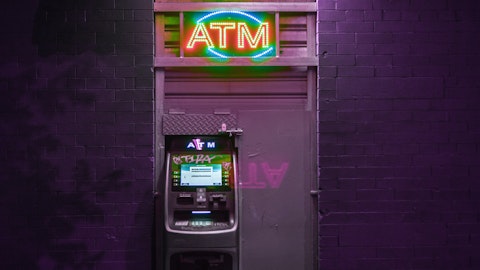Steven Alexopoulos: I want to start sort of follow up, Zach. With the NIM expected to trend down given all the hedges and protection you’ve put in place to sort of tighten that ban. And can you frame for us how much downside could we see what’s the range?
Zach Wasserman: Yes. Thanks, even, for the question. Look, I think the trend is something on the order of single-digit reduction on kind of a quarterly basis as we go throughout 2023. There’s a range of uncertainty. So I want to be clear, not being overly precise, you just think about all the factors that are going to play into that. The Fed funds actions, which, as you know, from staring at the dot plots are not aligned with the market expectation. So how that all plays out, I think it’s going to be the most important factor the pace and trajectory of beta, which at this point seems to be fairly well linear across time, but we’ll have to wait and see how that goes. And clearly, the big one is the economy where that tracks over the near term.
So it’s difficult to be overly precise, so I’m trying not to and bring back to dollar. Our goal will be to drive NII on a dollar basis. I said, I do expect some downward trajectory in them and probably something on the order of single digits on a sequential basis each quarter.
Steven Alexopoulos: Got it. That’s helpful. And then Zack, when we look at you’re obviously expecting more loan growth than deposit growth, a fairly large issuance of sub debt this quarter. Could you walk us through the funding strategy? I know you said you expect the overall growth in average earning assets. But what’s the funding strategy? It seems like you have to do much more than just on the deposit side? And maybe what will be the cost of that?
Zach Wasserman: Yes. I think it’s an important point. And it’s something that we feel is a point of strength and an advantage at this point in the cycle, given that we’re coming to the early to middle stage of the cycle has still a very advantageous overall position in terms of loan-to-deposit ratio, the mix of important categories of spot like time deposits in our noncustomer funding kind of relative to history. And so it allows us, as I’ve mentioned on a number of previous occasions to utilize the balance source of funding. If you look back at what happened in 2022, we grew loans at 10% deposits were more in the 2.5% range. Clearly, loan deposit ratios have tracked up, and we used a broad range of other funding sources like long-term debt like the FHLB and other noncustomer sources to balance out.
The same is going to be true for 2023, albeit to a somewhat less degree thinking about loan growth in that mid- to high single-digits range, 5% to 7%. Deposit growth in the 1% to 4% does imply we’ll continue to see loan-to-deposit ratios tick up. And you’ll see us, therefore, continue to utilize other balance funding sources like the Federal Home Loan Bank, other noncustomer sources of funding there. The rates that we’re seeing are pretty reasonable. The incremental economics certainly on that loan growth continued very accretive to return on capital and the overall cost of deposits and funding within that beta expectation so NIM expectation. Could I just talk on that question.
Operator: Our next question is from the line of Ken Usdin with Jefferies.
Ken Usdin : I wanted to ask you, I know we talked about this last quarter. The security swaps that you had added a nice amount of net interest income again. And I’m just wondering, can you help us understand just the benefit from that, if ineffectiveness helped that again? And just how does that go — like how do we track that going forward relative to just interest rates in terms of the benefits that you should get from there?





